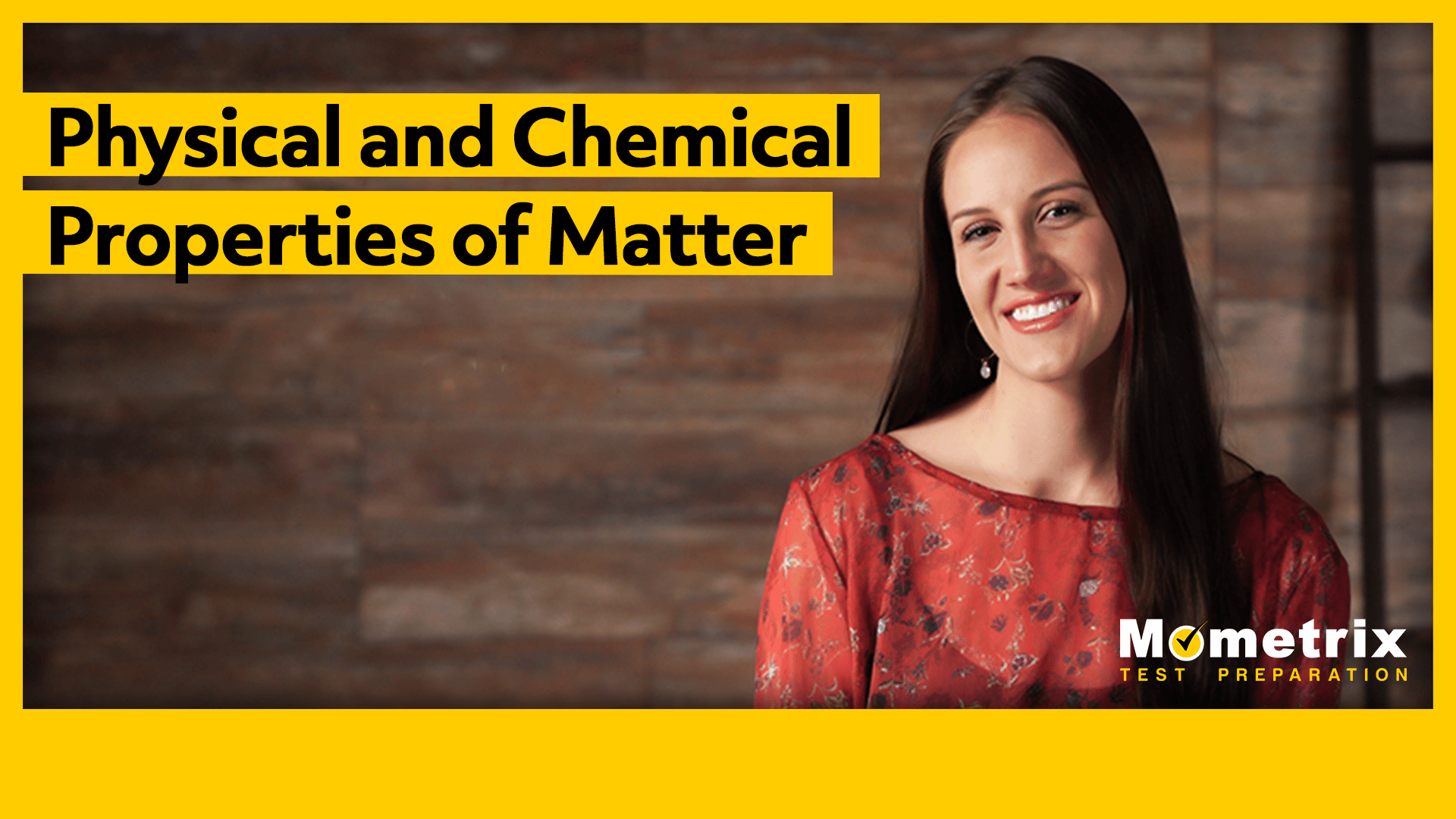
Hey everyone! Welcome to this Mometrix video on the physical and chemical properties of matter.
Have you ever classified something based on what you observe about it? Perhaps you’ve distinguished a dog from a cat based on the dog’s larger structure, flappy ears, and longer head shape. Maybe you’ve distinguished a chocolate lab from a golden retriever, because the chocolate lab was brown, had shorter and more compact hair.
What we observe helps us to make distinctions. Being able to make observable distinctions is a very good and necessary tool in life, and this absolutely applies to the sciences.
Now, properties are just characteristics of something. A physical property describes an observable change in a substance’s characteristics but does not affect the chemical makeup of that substance.
Physical Properties of Matter
Let’s take a look at some examples of physical properties of matter.
Boiling Point of a Substance
A substance’s boiling point is a physical property. For instance, when water (\(\text{H}_2\text{O}\)) boils, so when it converts from a liquid to a gas or water to steam, it is still water. The chemical identity is still \(\text{H}_2\text{O}\). The chemical property hasn’t changed, only its physical property. So, if there is an observable change, but the chemical identity doesn’t change, then you have a physical change.
Melting Point of a Substance
Take ice, for example. When ice melts into liquid water, the chemical identity doesn’t change. The identity of ice is still H2O. When ice melts, the only thing changing is its physical state.
Other Physical Properties
A physical property is anything you can hear, see, touch, smell, or measure and observe in some form without changing the chemical identity of the substance. Along with boiling point, and melting point, this includes:
- Solubility – this is a substance’s ability to dissolve in a solvent.
- Pressure
- Color
- Shape
- Malleability – this is a substance’s capacity to change form or deform under pressure.
- Volume – this describes the amount of space occupied by a substance.
- Viscosity – this is the thickness or semi-fluidity of a substance, because of its internal friction.
- Temperature
- Electric charge – this is a property that causes matter to encounter force when inside of a magnetic field.
- Density – this describes how close or how far apart the atoms within a substance are.
These, along with others, are all examples of physical properties of matter, but these do not change the chemical identity of the substance.
Chemical Properties of Matter
Now, a chemical property on the other hand can only be observed after a chemical reaction has taken place—so after the chemical has gone through an identity change.
Irregular Change in Color
If you mix white and red together and get pink or light red, then that’s probably not a sign of a chemical reaction. That’s just what happens when you mix the colors red and white together.
However, if you mix a red and white substance together and get blue, then you may have a chemical reaction.
Change in Consistency
When two substances are mixed together and there is a change in consistency, then this may reflect a change in the molecular structure. So, if you take two runny liquids and mix them together and the product is a thick jelly substance, then you might have a chemical reaction.
Change in Luster
Luster refers to the reflective quality of a substance. So, if you mix two dull murky substances together and they produce a really glossy or polished substance, then you might have a chemical reaction.
Appearance of Bubbles
The formation of froth or bubbles may suggest that a gas has been composed in the chemical reaction.
Change in Odor
Now, if it’s just a slight change in odor it’s probably not a chemical reaction. So, if I mix a substance that smells like honey (now this is just a silly example), with a substance that smells likes vanilla, and the ending result smells like some type of syrup then it’s more than likely not a chemical reaction. If you take those same two substances together, and their product smells like a smelly sock, then you may have a chemical reaction.
Change in Temperature
You can use a thermometer to take the temperature of each substance before, and if there is a change after the two have been combined, then there may be a chemical reaction.
Precipitate Formation
This just means that an insoluble solid is formed from a liquid solution. If this happens, then you probably are witnessing a chemical reaction.
So, physical properties are observed without the substance undergoing a chemical identity makeover, and chemical properties are observed after chemical reactions.
I hope that this video on physical and chemical properties of matter was helpful to you.
See you guys next time!
